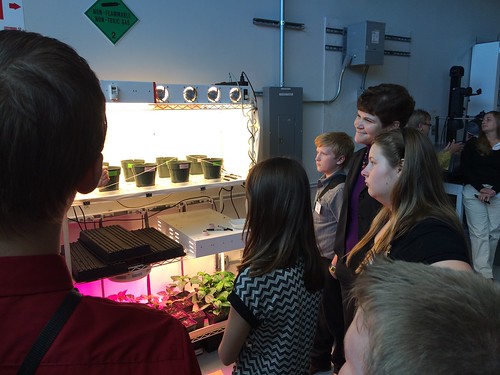
Last week, we entered a bold new era of exploration and discovery as NASA launched the Orion spacecraft, a major step testing the possibility of going to Mars.
As NASA contemplates sending human missions to Mars, one question we must answer is: what will the astronauts eat and what foods will assist future missions? NASA and USDA are working together to develop plants that can grow, thrive, and produce in new environments – signaling opportunities for fresh, nutrition-rich food for astronauts on long duration space flights.
In conjunction with the Orion launch, I toured the Kennedy Space Center's Space Life Science Center with local 4-Hers. Together, we marveled at the research, technology, and biotechnology found in NASA’s labs. We saw dwarf plums that USDA and NASA developed together, designed to fit in small spaces and produce fruit continually - not seasonally. We saw plants growing without soil and plants growing with minimal water.
We saw some of the science that NASA is using to begin growing food in space, learned about the technologies that are being developed to enrich our agricultural production and conservation efforts here on Earth, and discussed all of the possibilities that science holds for us as farmers and ranchers. Do roots grow towards gravity or water? Do plants have to only make fruit within one season?
USDA and NASA cross paths in many ways. Through satellite imagery provided by NASA, USDA can make better drought and flood predictions and help forecast global food supplies. Working with USDA, NASA has developed new varieties of plants that can thrive in space exploration environments. We share data, science, and the experience of exploration as we push the boundaries of both of our fields.
Last week was about making science and the opportunities involved in the production of food available real to the students I met with – and to inspire them to consider their part in our future.
These students and I both left with a deep sense of opportunity and excitement about the intersection between USDA and NASA. Growing tomorrow’s farmers and ranchers requires investment and engagement at all ages. Together with these youth, our scientists will build an appreciation for the fundamentals of agriculture along with a pioneering spirit.
